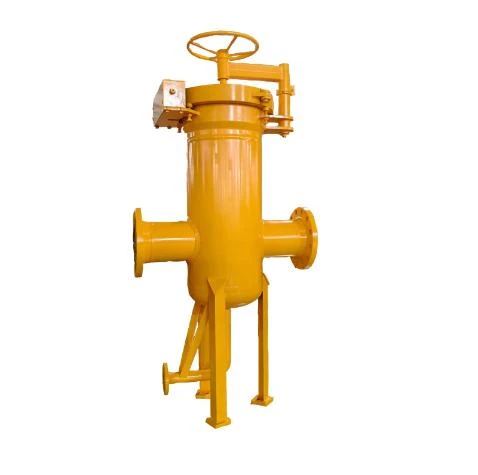
Dec . 01, 2024 03:03
Back to list
coalescing filter
Understanding Coalescing Filters An In-Depth Look
In various engineering and industrial processes, the purity and quality of liquids and gases are paramount. Among the tools designed to ensure these high standards are coalescing filters. These filters play a crucial role in removing water, particulates, and other contaminants, promoting efficiency and longevity in machinery and processes. This article delves into the operational principles, applications, and advantages of coalescing filters, providing a comprehensive overview of their significance in today's industries.
What is a Coalescing Filter?
A coalescing filter is a specialized type of filter designed to separate and remove water and other contaminants from fluids, particularly in compressed air systems, fuel lines, and oil processing. The term coalescing refers to the process of combining smaller droplets or particles into larger ones, enabling easier removal. In essence, coalescing filters leverage the physical phenomena of liquid-liquid separation to enhance filter efficiency.
How Do Coalescing Filters Work?
The functioning of a coalescing filter is relatively straightforward. It typically consists of a series of filter media through which the fluid passes. As the fluid flows through the filter, the coalescing media captures tiny water droplets dispersed within the oil or air. These droplets collide with the filter fibers and gradually merge, forming larger droplets.
Once they become sufficiently large, gravity aids in the separation process. The larger droplets then coalesce and flow to the bottom of the filter, where they can be drained off periodically. The remaining fluid is considerably cleaner, free from most water contaminants and particulates.
Key Applications
Coalescing filters find diverse applications across various sectors
1. Compressed Air Systems In industries where compressed air is vital, coalescing filters are indispensable. They remove water vapor and oil aerosols, ensuring that the air used in pneumatic tools is dry and clean. This is essential for preventing corrosion and damage to machinery.
2. Fuel Filtration In the fuel industry, coalescing filters remove water and sediment from diesel and other fuels. Given that water can lead to microbial growth and affect combustion, these filters are crucial for maintaining fuel quality.
coalescing filter

4. Marine and Aviation Coalescing filters are used in jet fuel filtration systems to eliminate water, which can cause serious operational issues.
Advantages of Coalescing Filters
The benefits of using coalescing filters in industrial applications are extensive
- Enhanced Efficiency By removing contaminants effectively, coalescing filters ensure that systems operate smoothly, reducing wear and tear on equipment and minimizing costly repairs.
- Reduced Downtime With cleaner fluids, machines face fewer malfunctions, leading to increased operational uptime and production efficiency.
- Improved Product Quality In processes that require high purity, such as food production or pharmaceuticals, coalescing filters help maintain stringent quality standards.
- Cost-Efficiency While there may be initial investment costs for high-quality coalescing filters, the long-term savings from increased machinery life and reduced maintenance are substantial.
- Environmentally Friendly By preventing contaminants from entering the environment, coalescing filters contribute to more sustainable industrial practices.
Conclusion
In summary, coalescing filters are vital components in maintaining the integrity and efficiency of many industrial processes. Their ability to remove water and particulates ensures cleaner air and liquid, enhancing the performance of equipment and the quality of end products. As industries continue to place a premium on efficiency and sustainability, coalescing filters will undoubtedly remain a crucial technology in achieving these goals. Understanding their operations, applications, and benefits allows engineers and decision-makers to make informed choices, ultimately contributing to improved performance and reduced environmental impact.
Next:
Latest news
-
Safety Valve Spring-Loaded Design Overpressure ProtectionNewsJul.25,2025
-
Precision Voltage Regulator AC5 Accuracy Grade PerformanceNewsJul.25,2025
-
Natural Gas Pressure Regulating Skid Industrial Pipeline ApplicationsNewsJul.25,2025
-
Natural Gas Filter Stainless Steel Mesh Element DesignNewsJul.25,2025
-
Gas Pressure Regulator Valve Direct-Acting Spring-Loaded DesignNewsJul.25,2025
-
Decompression Equipment Multi-Stage Heat Exchange System DesignNewsJul.25,2025

